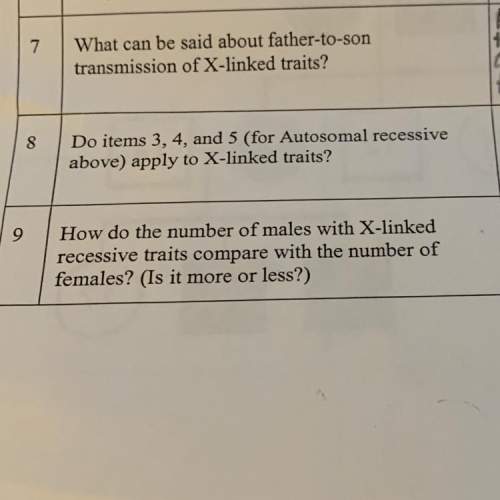
Biology, 06.05.2020 04:18 sickomode2048
E. O. is an 8-year-old girl with a history of asthma and allergy to bee stings. She has been brought to the clinic complaining of a throat infection. Her health care provider prescribes a course of penicillin to manage her current infection and cautions her parents to watch her closely for a reaction. Analyze this case study and answer the next five questions that follow. Question 1. What type of reaction is the health care provider concerned about? (select all that apply)A. Anaphylactic reactionB. Type II hypersensitivity reactionC. Type I hypersensitivity reactionD. Type III hypersensitivity reactionWhich of the following is true about the role of IgE and mast cells in type I hypersensitivity reactions. (select all that apply)A. Degranulation of mast cells include release of histamine and other chemicals. B.Type 1 hypersensitivity reactions are specific to a particular antigen. Memory T and B cells store the record of allergic exposures. With reexposure, larger quantities of antibodies are produced and the body reacts strongly and quickly. C.Mast cells with IgE receptors bind the Fc portion of an IgE antibody, making the mast cell responsive to particular allergens. D.Cross-linking of two IgE receptors to one allergen on mast cells causes an increase in intracellular calcium. Why might E. O. react adversely to the antibiotic with the first use? (select all that apply)A. E. O. has a high total IgE level due to other allergies leading to a reaction. B. E. O. has a low total IgE level due to other allergies leading to a reaction. C.Normally enough antibody is not produced with the first exposure to initiate a reaction. However, molecularly similar antigens from the environment may serve to sensitize a person and cause a reaction with the first use of the antibiotic. D.Normally enough antibody is produced with the first exposure leading to a reaction. What would you tell E. O.’s parents to look for when they are assessing for a reaction? (select all that apply)A. Reactions may include hives and localized swelling. B.Reactions usually occur within 15 to 30 minutes after exposure to the allergen. C.Reactions usually occur 24 hours after exposure to the allergen. D.Reactions may include wheezing, shortness of breath, tachycardia, and hypotension. What would you suggest the parents do if a reaction does occur? (select all that apply)A. Do not administer any more doses of antibiotic. B.Wait until the symptoms resolve without intervention. C.Take the child to the emergency department. D.Administer epinephrine hydrochloride (EpiPen).

Answers: 2


Another question on Biology

Biology, 21.06.2019 16:00
You need to make 500ml of 7h9(+) media with 1x adn and 30ug/ml of the antibiotic kanamycin. your stock solutions are 10x adn and 30mg/ml of kanamycin. the solvent is distilled water. how much of each component will you need to make the desired final solution?
Answers: 2

Biology, 21.06.2019 18:40
During sunny hours, a large amount of build up between the hours of 1: 00-5: 00 pm. a. ozone b. mercury c. lead d. sulfuric acid
Answers: 1

Biology, 22.06.2019 09:00
Select all that apply genes are specific nucleotide sequences occur in numbers that are the same as the number of chromosomes are located in a specific place on a chromosome determine the traits of an organism are units of rna
Answers: 1

Biology, 22.06.2019 18:00
Prokaryotic and eukaryotic cells are different in many ways other than the presence or absence of a nucleus. if both archaebacteria and eubacteria are prokaryotic cells, then why are archaebacteria more closely related to eukaryotic cells than they are to eubacteria?
Answers: 3
You know the right answer?
E. O. is an 8-year-old girl with a history of asthma and allergy to bee stings. She has been brought...
Questions

Mathematics, 04.06.2021 22:20






Mathematics, 04.06.2021 22:20





Mathematics, 04.06.2021 22:20


Physics, 04.06.2021 22:20

History, 04.06.2021 22:20

Mathematics, 04.06.2021 22:20



Mathematics, 04.06.2021 22:20





